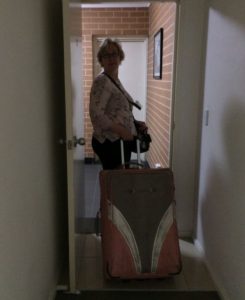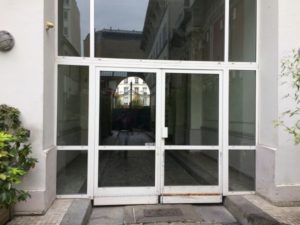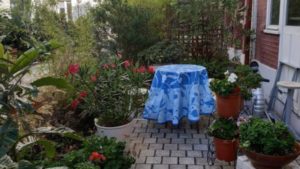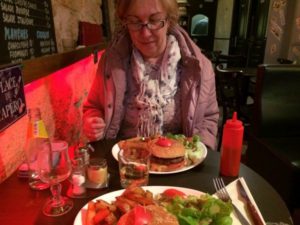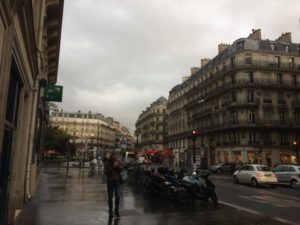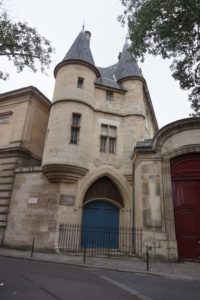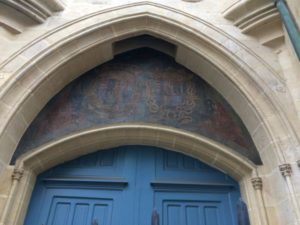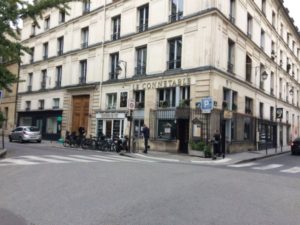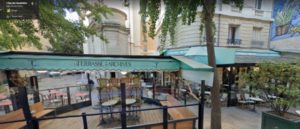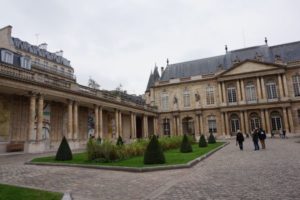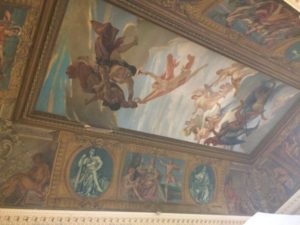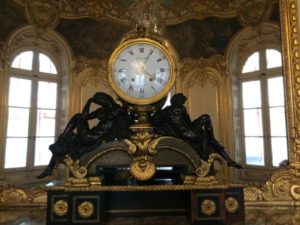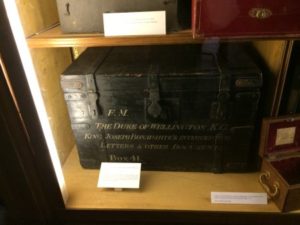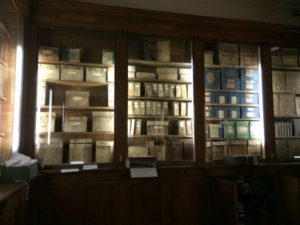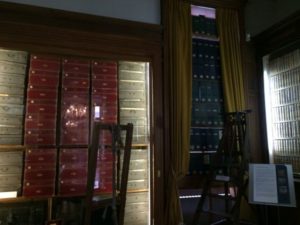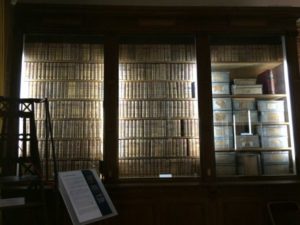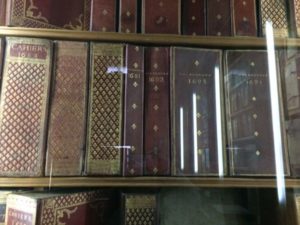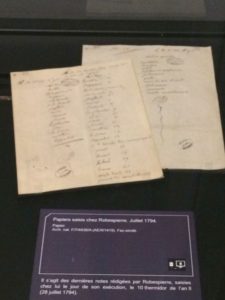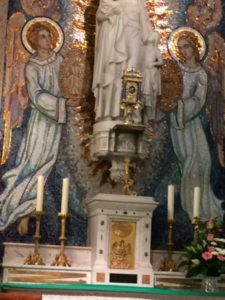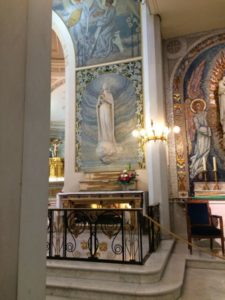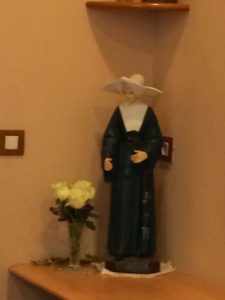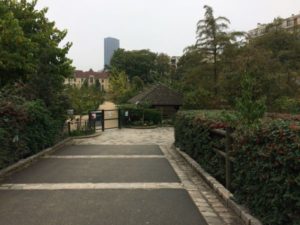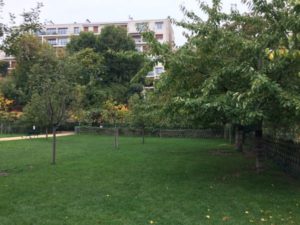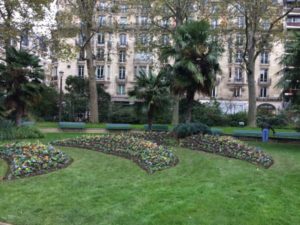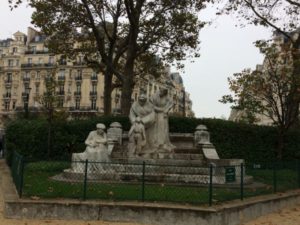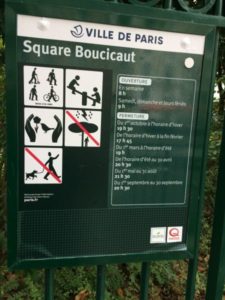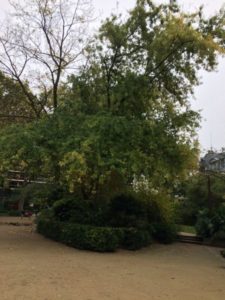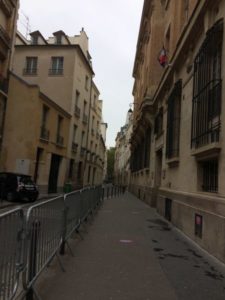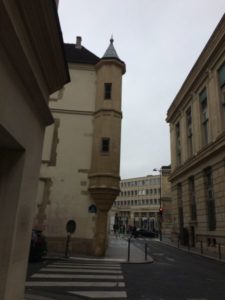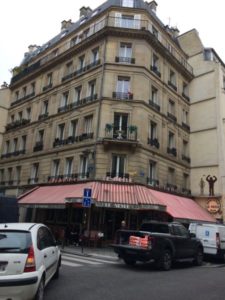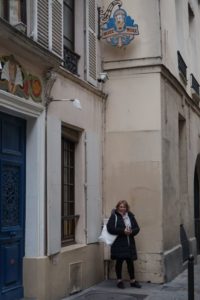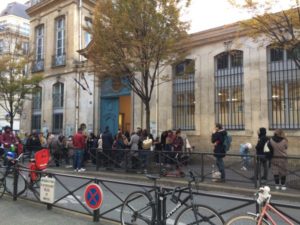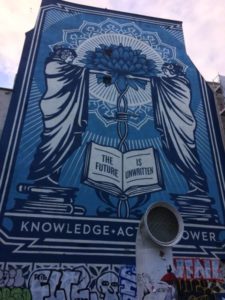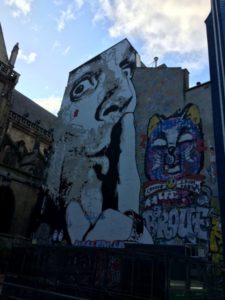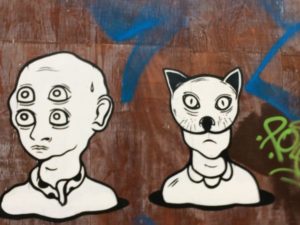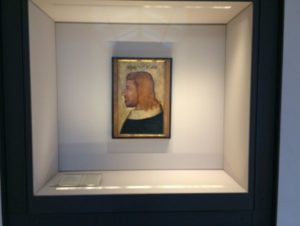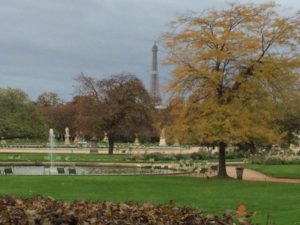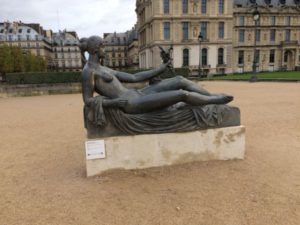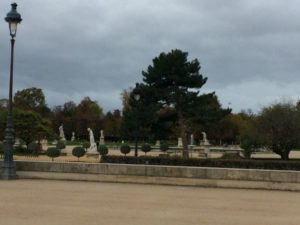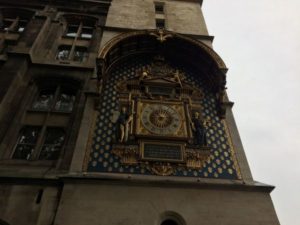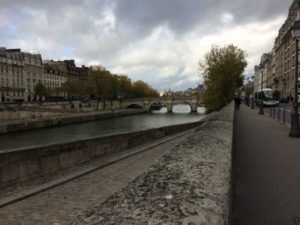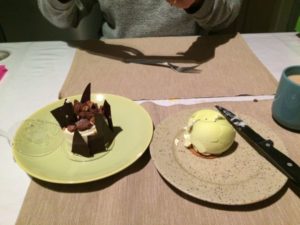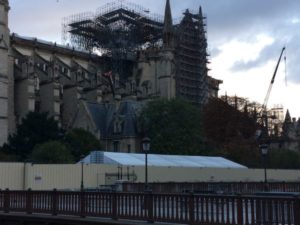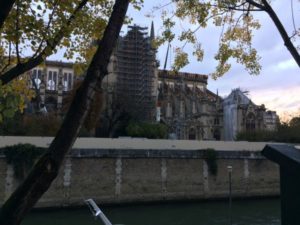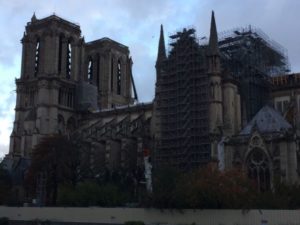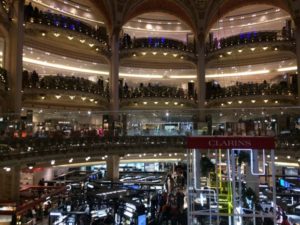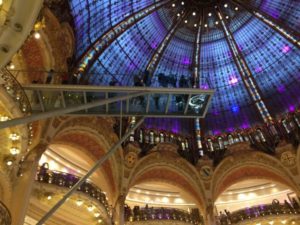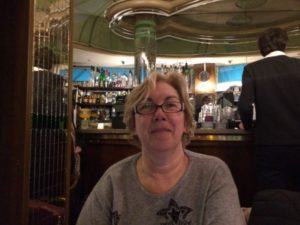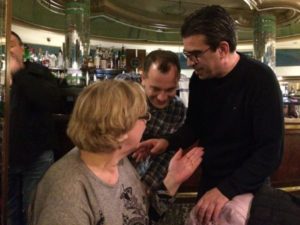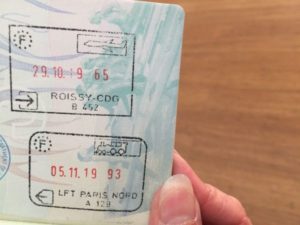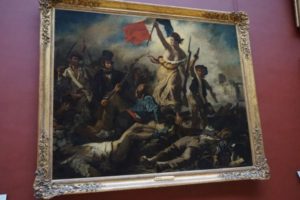| On Thursday the 24th of October 2019, Cathy T flew down to Sydney and joined Cathy A in attending the Historical Novel Society's 3-day conference in Parramatta. The day following its conclusion, they said goodbye to their weekend unit and travelled to the Sydney International Airport and boarded a plane for Paris. Ahead of them lay two glorious weeks without distraction, able to explore as many facets of the 14thC for their Lions and Lilies as they were able to find. |
| We arrived around 7am in the morning on a dull and almost rainy day. We caught a cab from the airport to our home for the next week, a B&B instead of a hotel. If you've ever walked the streets of Paris and, like me, stayed only in hotels, you may have wondered what was behind some of these great big iron doors that you constantly pass. Well, we were about to find out! When we reached our address in the 10th arrondissment, at one of those 'George-Eugene Haussmann' buildings in Rue La Fayette, and were given a code to open the blue gate in the arch. There's a kind of driveway (for deliveries) and another set of double glass door behind which is a little garden oasis and rows of apartments. |
| We had a full itinerary and several walking tours, so this page will be dedicated to the the other places in Paris that we visited in between.
As each tour was fairly intensive, a separate event has been created and they will appear in the following months as our blogs beginning with 'An Unforgettable Day at the Louvre.'
CLICK HERE TO GO TO BLOG
Of course, who can visit Paris without finding their favourite bar and restaurant. We thoroughly enjoyed many sumptuous meals and then walking them off along the streets of Paris. |
| On our first full day in Paris, we had a walking tour in the morning (Blog - Best of the French Revolution). Our next stop was the Hotel d’Clisson, a 14th century tower that was home to Oliver de Clisson, companion-in-arms to Bertrand du Guesclin, in the time of Lions and Lilies. We caught the metro from Bastille to Rambuteau and it was a short 5 mins walk to view the outside. We were to learn that any accessible entrance to the tower would be from inside the National Archives building, in the next street. |
| But some lunch first and since our first choice of ‘Le Connetable’ (for Bertrand du Guesclin) was not possible as it was closed for renovation, we dined across the road at La Terrasse des Archives, in the well-heated terrace or glass house, which was perfect. |
| After lunch we made our way to the National Archives building, attached to the back of the Clisson Tower. (I was nursing the hope of being able to access the tower, ever since first seeing it on my last day in Paris in 2016 - CT) Unfortunately, this proved unsuccessful, some lovely French guards inside informing us it was not open to the public but used as offices! The archives held within this huge building were amazing, and I found one particular lovely gem. If you look carefully at the middle picture in the row below, you will see something special! Proof of the name as early as 1272. 🙂 |
The Archives Room
Access to the tower runs off this room. Can you imagine the stories hidden in these filed-away pages?
| The first two images above are papers that survived the French Revolution - a letters of Napolean and Josephine after the capture of Mantoue and papers seized from Robespierre, July 1794. Cathy A and I tried to capture an image of ourselves with the Clisson Tower turrets in the background.
The next morning had been ear-marked as a very special visit for Cathy T to call upon the gracious lady for whom she was named (by her sisters), Saint Catherine of Laboure. Her incorrupta body lies in state at the Chapel of Our Lady of the Miraculous Medal, more commonly known as 140 Rue de Bac. Together, both Catherines came to pay their respect in a most wondrous chapel, and then visited the gardens named in her honour. Then dropped in at the Square Boucicaut - a formidable family in Lions and Lilies time, Jean I Le Maingre and Jean II Le Maingre, known as Le Boucicaut (the brave), father and son both becoming Marshals of France. |
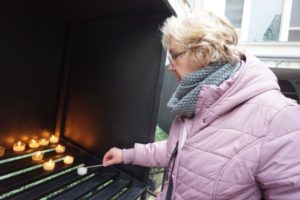 |
 |
| Then it was onto the Cafe le Nesle in the heart of Saint Germain de Près for lunch, only a quick 20 minute walk away (or 20 mins by metro). Located down near the Seine, it would be a hop, skip and a jump across to the Isle de la Cite, (the central island between North and South banks), for our afternoon walking tour. The Hotel le Nesle is described as an 'original' building and though not the original tower that Duc Jean de Berri lived in, it was as close as we could get to where he lived, evidence of the tiny streets and 13thC - 14thC buildings still to be seen. |
| That afternoon was the second of our French Revolution walking tours (another fascination era of history), and for the rest of our time in Paris, our itinerary included a day investigating 'Vincennes,' the home of King Charles V who is a character in Lions and Lilies from book 5 onwards. You can view these photos through the gallery, as well as our day at Versailles, and our time in the Louvre is covered in July's (2021) blog. The two French Revolution walking tours, as well as a Templar Tour and a Marie Antionette exhibition, which gave us access to the concergerie (another royal palace in Lions and Lilies) will feature as upcoming blogs, and all three covered points of interest to L&L. That leaves me with some random photos that were snapped during our escapades - please enjoy! |
| We were there on Halloween and yes, there were some decorations - Cathy A really liked the pumpkin! The second image below is of an odd-looking building for Paris. The last two images - well, as we sat in a park, catching our breath, we noticed a lot of adults gathering. The door opened and out poured the children! It was a school! |
Some street art!
In and around the Louvre!
| The middle image above is a famous picture of Jon le Bon. BELOW - The start of the garden of the Tulleries (Jardin des Tulleries), behind the Arc de Triomphe du Carrousel. |
The Ile de la Cite
| ABOVE - the clock Charles V commissioned for Paris and some French patisserie for dessert . BELOW - the very sorry sight of Notre Dame - of course, closed to the public |
| Galeries La Fayette - huge shopping center under a dome, all the top brands! And the Statue of Joan of Arc (Jeanne d'Arc) near the Louvre |
Marianne
| Marianne has been the national personification of the French Republic since the French Revolution, as a personification of liberty, equality, fraternity and reason, and a portrayal of the Goddess of Liberty. Marianne is displayed in many places in France and holds a place of honour in town halls and law courts.
Liberty Leading the People was painted in 1830 by Eugene Delacroix right after the revolutionary effervescence that had swept across Paris that same year. Characterised by its allegorical and political significance, this large oil on canvas has become a universal symbol of liberty and democracy.
The painting was immortalised after it was featured on 100-franc bank notes from 1978 to 1995. |
Our last night!
| Our favourite bar just across the road. Played a lot of Pink Floyd but after we ordered the first time, the music mysteriously changed to ACDC! Gotta love the French! Cathy A explaining her choice of mixer as they listened on, baffled! |
Farewell to Paris - in by plane and out by train! Hello London!
